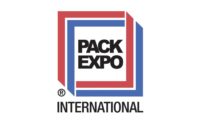Taking Giant Steps
Leading Barry Callebaut executive deconstructs supply initiative with The Hershey Company.
When it was
announced earlier this spring that Barry Callebaut and The Hershey Company
would join forces for a major supply alliance, the venture was frequently
and rightly described as a “partnership of giants.” Hershey is
North America’s largest confectionery manufacturer, and Barry
Callebaut is the world’s leading manufacturer of cocoa, chocolate and
confectionery products. So it’s no wonder that the move is producing
some industry-wide reverberations.
Here’s what Massimo Garavaglia, Barry
Callebaut’s president of Food Manufacturers and Gourmet &
Specialties North America, told Confectioner about how this monumental venture will work and what it
means to both companies.
Patrick De Maeseneire, CEO of Barry Callebaut, has
described this long-term agreement with Hershey as a “milestone” for the company. Does Barry Callebaut participate
in similar ventures with candy makers in other markets or is this a
first?
Barry Callebaut’s agreement with Hershey is
indeed a milestone for our company as it will completely transform our
business in the Americas by doubling our production capacity of industrial
chocolate in the region. The agreement with Hershey also will make Barry
Callebaut the No. 1 industrial chocolate maker in the United States.
The outsourcing trend within the chocolate industry has
been apparent in Europe for some time and is only now reaching the United
States. Thanks to its innovative strength and cost leadership, Barry
Callebaut has succeeded in firmly establishing itself as the
industry’s outsourcing partner of choice on both sides of the
Atlantic Ocean. In addition to the Hershey agreement, Barry Callebaut
announced in February a planned long-term agreement to supply liquid
chocolate and produce some consumer products for Nestlé in the
European market, including France, Italy and Russia. Overall, the major
part of the growth Barry Callebaut has registered in its Food Manufacturers
business unit can be attributed to outsourcing.
It’s not unusual for a food manufacturer to work
with a supplier on product development initiatives. However, does this
supply alliance take such cooperation to the next level?
We believe there is great potential for this
partnership, and this agreement will enable both of our companies to work
together to drive long-term growth in the global chocolate market.
As part of Barry Callebaut’s agreement with
Hershey, both companies will meet jointly on a regular basis to discuss
research and development initiatives. Specifically, we believe there is a
great deal of opportunity to develop new, innovative chocolate products,
especially in the premium segment. This might include origin chocolate,
fair trade chocolate, and chocolate with health and wellness benefits, and
this is an area where Barry Callebaut is leading the industry. In
fact, Cacao Barry, Barry Callebaut’s group company in France,
was among the first chocolatiers in the world to bring single-origin
chocolates to the market thanks to our presence in Africa.
What areas of current Barry Callebaut research do you
consider most groundbreaking and/or most significant?
Barry Callebaut is focusing its innovation efforts in
three key areas that are important to consumers and to our customers. Those
are health and wellness, the taste experience and indulgence, and
convenience.
We know that consumers want to have choices, and they
want to experience different tastes. With nearly 1,700 different recipes,
Barry Callebaut is well positioned to satisfy this demand. Right now, the
taste experience is the most important driver of product innovation. Dark
chocolate sales have risen 42 percent in the last five years, and Barry
Callebaut is continuing to introduce new origin chocolate products. The
latest is a Cacao Barry Millesime 2006 chocolate made from beans from a
family-owned, remote farm in Peru — something very exclusive
for our gourmet customers.
Consumers are also increasingly health conscious, so
Barry Callebaut is continuing to look at ways to bring out the healthful
benefits of the cocoa bean in our products. One example is Barry
Callebaut’s polyphenol-rich Acticoa chocolate, which combines good
taste with a guaranteed minimum polyphenol content. It has the highest
antioxidant effectiveness of any chocolate currently available in the
market.
Finally, convenience is important to our customers, so
Barry Callebaut is looking at innovations in the ready-to-use and
ready-to-sell segments. We recently introduced a ready-to-use mousse
product under the Callebaut brand that is an industry first.
Will the expanded production capacities the Hershey
agreement makes possible for Barry Callebaut benefit the company’s
other North American customers?
Yes, as part of the supply agreement with Hershey,
Barry Callebaut will be expanding and optimizing our factory network in
North America. Not only will we construct a new factory in Monterrey,
Mexico, and take over parts of Hershey’s factory in Robinson, Ill.,
we will be adding production capacity to Barry Callebaut facilities in
American Canyon, Calif., and St. Hyacinthe, Quebec.
While a significant portion of this production
capacity will be dedicated to supplying Hershey, all of our North American
customers will benefit. The capacity expansion will also allow Barry
Callebaut to further grow in the important markets of North America.
Let’s not forget that the United States is the largest consumer
confectionery market in the world.
How will the venture with Hershey enhance Barry
Callebaut’s already progressive sustainability initiatives?
The two companies will work together on cocoa
sustainability efforts supporting on-the-ground programs and industry
efforts in the world’s cocoa-growing regions. Barry Callebaut
also will work with Hershey on corporate social responsibility projects on
the ground in West Africa.
Give us Americans the benefit of Barry
Callebaut’s global perspective, please. What are some of the ways in
which the U.S. chocolate market differs most substantially from the
European market?
Western Europe, especially Switzerland, Belgium and
France, have a very long chocolate tradition and history. These are also
the countries where the major chocolate inventions were made. The U.S.
chocolate market is slightly less mature than the European chocolate
markets. However, Barry Callebaut will use its innovative power to further
grow the North American chocolate markets. We’re the only chocolate
manufacturer that unites Swiss, Belgian and French chocolate under one
roof, which allows us to bring the world’s premium chocolates to our
customers. And with close to 1,700 active recipes, Barry Callebaut can meet
every local taste preference.


